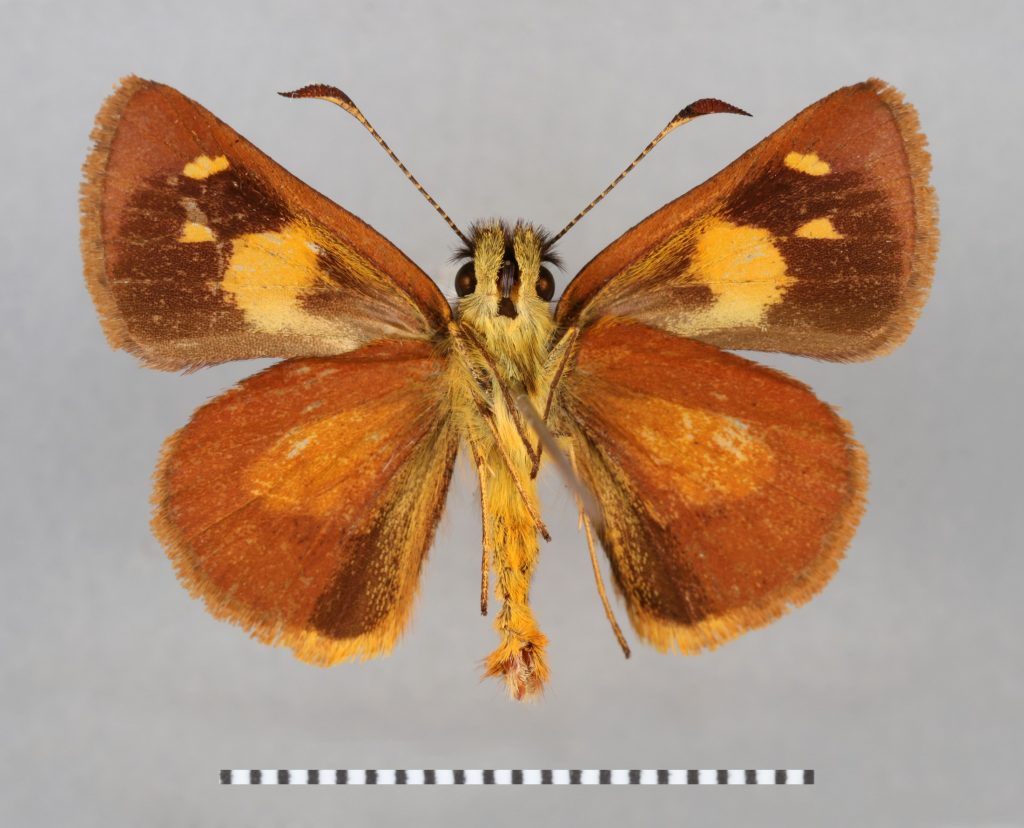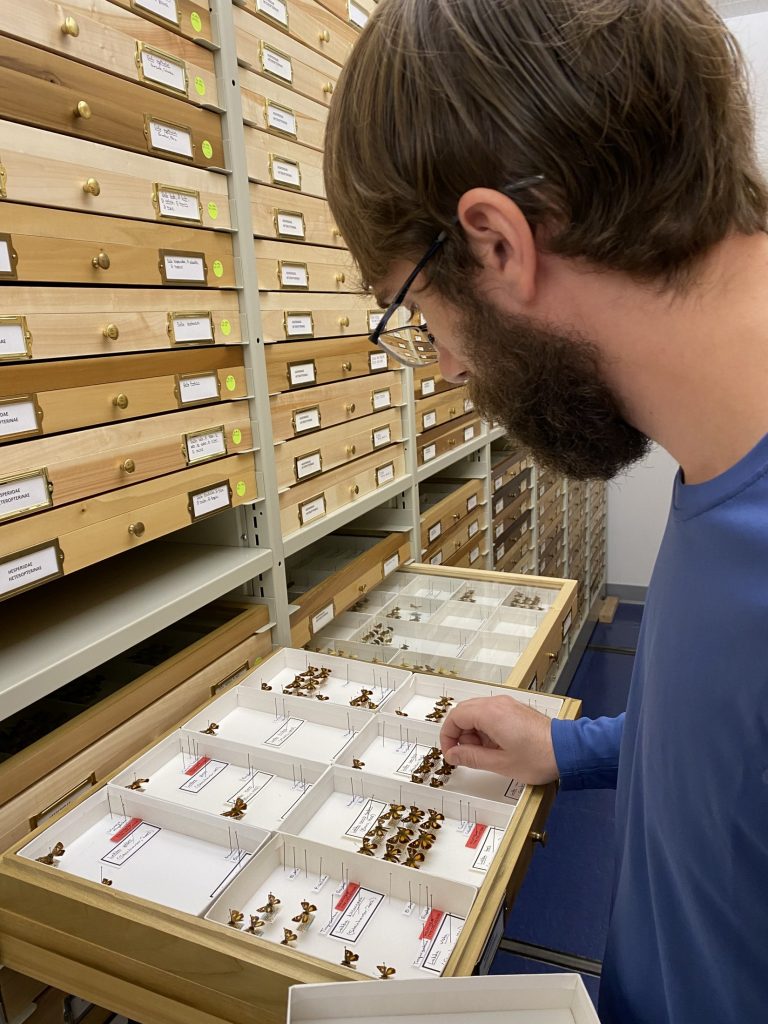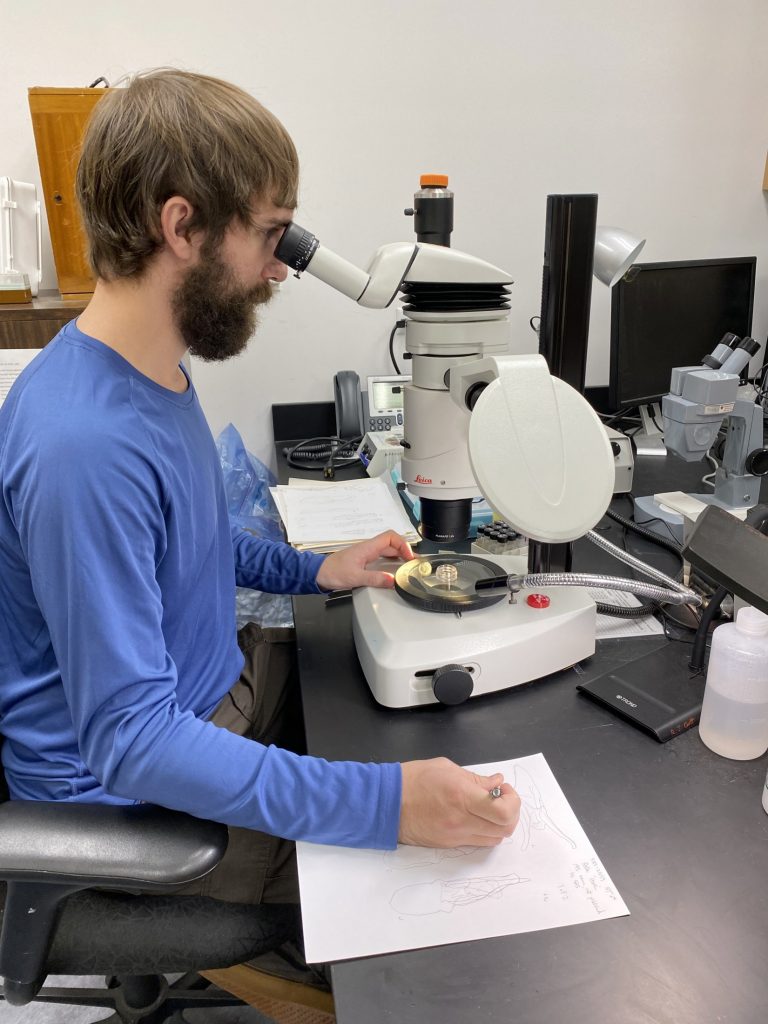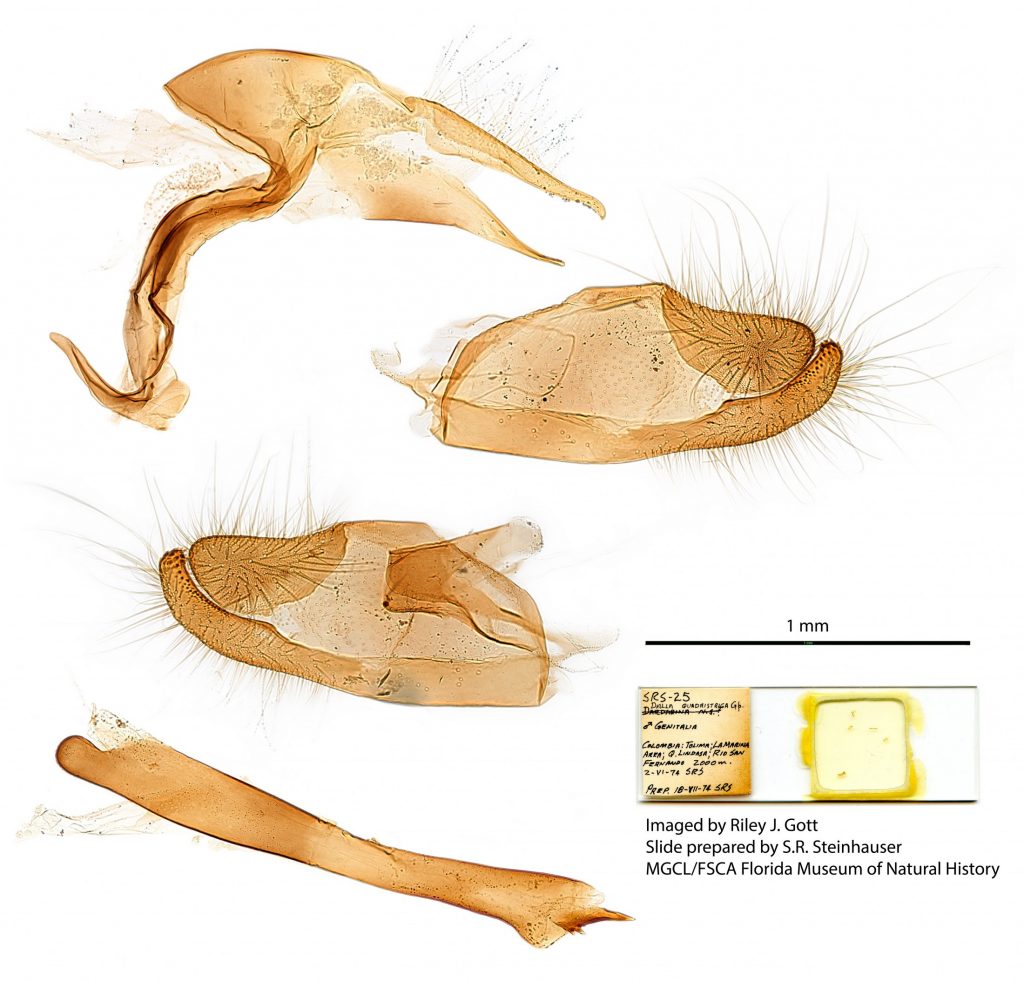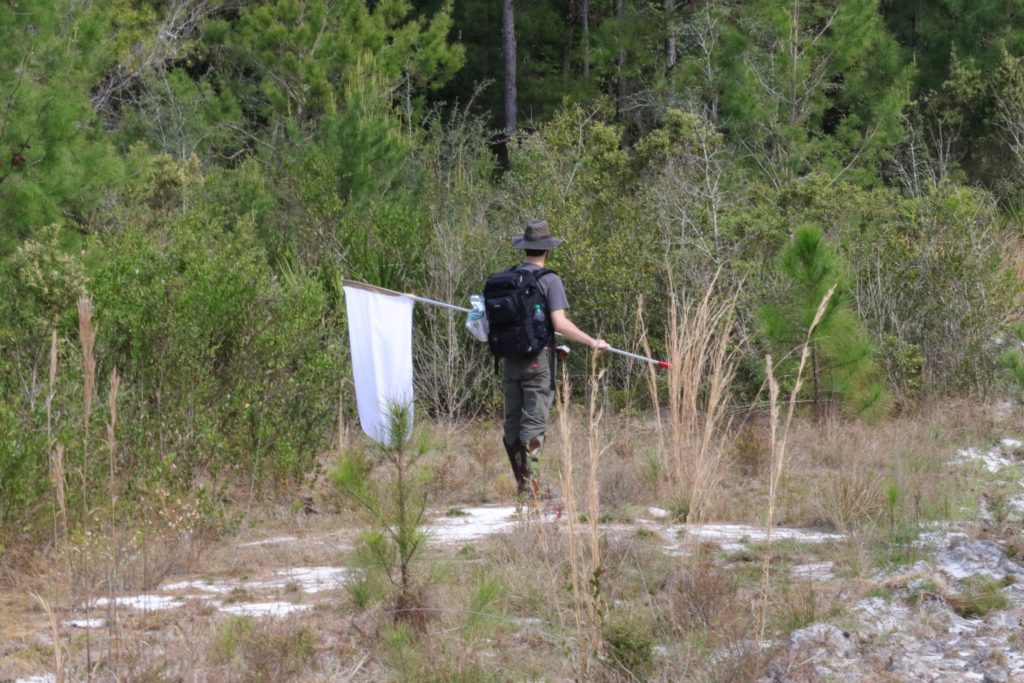Riley Gott began his doctoral studies in August 2022 studying the taxonomy and systematics of the primarily Neotropical butterfly genera Dalla, Ladda, and Piruna (family Hesperiidae), under a joint graduate assistantship from the McGuire Center for Lepidoptera and Biodiversity and the Entomology and Nematology Department at the University of Florida. He uses morphological and molecular techniques to try to understand the evolutionary relationships among taxa and to discover characters that can confidently be used to identify species. The life histories are not known for many of the skipper butterfly species he is studying, which leaves a large area of potential investigation to understand how these species interact with each other throughout their life cycles and how they have interacted with each other throughout time.
Before research can begin, study material must be acquired for molecular and morphological techniques. Specimens for this kind of research are loaned from collections throughout the world in addition to collecting new specimens through carefully planned fieldwork. Most research collections, like the McGuire Center, have a separate area for housing type specimens. “Type specimens” are those that researchers use to define the species to which a name should be applied, and they are thus critical for the consistent application of names to species. Riley’s research involves both approaches to obtaining specimens for study, with his field work for his doctoral studies focusing on the discovery of immature stages to understand species interactions.
Once specimens are obtained for studies, a variety of techniques are employed to answer research questions. Morphological dissections are one essential technique for studying anatomical characters that can help distinguish species. Such characters can also indicate relationships with closely related species, especially when they have superficially similar wing color patterns and when other information, such as the locality or time of year the specimen was collected, does not help identify them. Once dissections are completed, they can be imaged or illustrated with line drawings to aid in comparative studies. Riley illustrates his specimens with the traditional method of using a camera lucida (or drawing tube, which allows the researcher to simultaneously see the object they are illustrating as well as their own drawing), attached to a stereomicroscope, to draw an initial sketch of the important characters. These sketches are traced with black ink onto transparent paper, and additional details, such as setae (hairs or spines) and stippling (to show overlapping structures), are added. The inked illustrations are then scanned and manipulated in image editing software for publication. Riley prefers hand-drawing illustrations to make significant details more visible, rather than taking photographic images that do not always reflect three-dimensional features so clearly.
Prior to his doctoral studies, Riley worked for his Master’s research with the duskywing skipper butterflies of the genus Erynnis in Florida. He conducted field work throughout north-central Florida to better define the distribution of two species, Erynnis brizo and E. somnus. Overall, he has been working in research collections for nine years, curating and preparing specimens for research, and has volunteered with a USDA-APHIS-PPQ lepidopterist to understand the importance of biological collections in the regulation of pest species in international trade. His work in collections has aided in the description of 11 new taxa, including eight skipper butterflies (Hesperiidae) and three hawk moths (Sphingidae).
Besides working in the McGuire Center collections, Riley is involved with field work for ongoing biological surveys through the McGuire Center. Riley is also working with volunteers and students in the McGuire Center collections, teaching them how to handle and work with fragile specimens for long term preservation. His volunteers have been involved in digitizing and databasing sections of the Hesperiidae collection, and students have learned how to complete morphological dissections and illustrations through Riley’s supervision.

When not studying butterflies, Riley enjoys building and working on stringed instruments including, mandolins and guitars, as well as outdoor activities such as gardening, hiking, and fishing. Since beginning graduate school, his work with stringed instruments has transitioned from the time-consuming process of building acoustic instruments to completing shorter projects modifying guitar electronics.
Selected Publications
Warren, A. D., R. J. Gott, O. Dorado, and L. Legal. 2020. A new species of Dalla Mabille, 1904, from Morelos, Mexico (Lepidoptera: Hesperiidae: Heteropterinae). Tropical Lepidoptera Research 30 (1): 46–51.
Toussaint, E. F. A., E. A. Ellis, R. J. Gott, A. D. Warren, K. M. Dexter, C. Storer, D. J. Lohman, and A. Y. Kawahara. 2020. Historical biogeography of Heteropterinae skippers via Beringian and post-Tethyan corridors. Zoologica Scripta 50: 100–111.
Warren, A. D., and R. J. Gott. 2021. A review of Polites rhesus (W. H. Edwards, 1878), with the description of a new subspecies from Mexico (Lepidoptera: Hesperiidae: Hesperiinae). Tropical Lepidoptera Research 31 (1): 11–21.
Warren, A. D., and R. J. Gott. 2021. A review of Hesperia uncas W. H. Edwards, 1863 in Mexico, with the description of a new subspecies (Lepidoptera: Hesperiidae: Hesperiinae). Tropical Lepidoptera Research 31 (2): 70–79.
Warren, A. D., R. J. Gott, and D. R. Dolibaina. 2021. A new species of Lindra Evans, 1955 from Ecuador (Lepidoptera: Hesperiidae: Hesperiinae). Tropical Lepidoptera Research 31 (2): 86–89.
Ccahuana, R., R. Tejeira, T. Hurtado, S. Nakahara, M. Rodríguez-Melgarejo, R. J. Gott, J. See, and G. Gallice. 2021. Immature stages of Ebusus ebusus ebusus (Cramer, 1780) in the Peruvian Amazon (Lepidoptera: Hesperiidae: Hesperiinae). Tropical Lepidoptera Research 31 (2): 90–95.
Warren, A. D. and R. J. Gott. 2021. Four new species of Piruna Evans, 1955, from western Mexico (Lepidoptera: Hesperiidae: Heteropterinae). Tropical Lepidoptera Research 31 (2): 101–117.
Miller, J. Y., D. L. Matthews, and R. J. Gott. 2022. Three new species of Cautethia Grote (Lepidoptera: Sphingidae) from the Lucayan Archipelago and keys to West Indies species. Insecta Mundi 0937: 1–28.
Zhang, J., Q. Cong, J. Shen, L. Song, R. J. Gott, P. Boyer, C. S. Guppy, S. Koehler, G. Lamas, P. A. Opler, and N. V. Grishin. 2022. Taxonomic discoveries enabled by genomic analysis of butterflies. The Taxonomic Report of the International Lepidoptera Survey 10 (7): 1–60.
